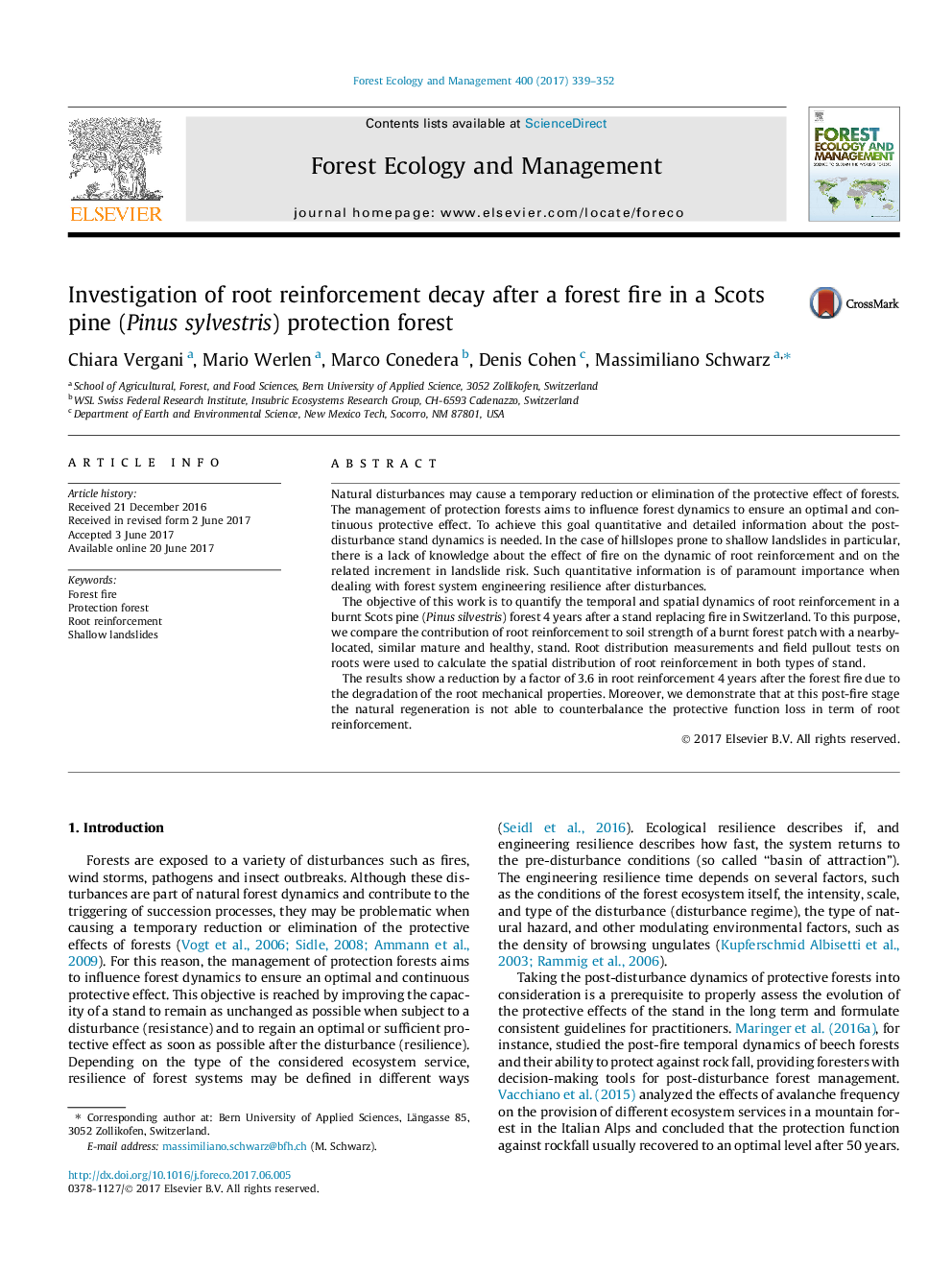| کد مقاله | کد نشریه | سال انتشار | مقاله انگلیسی | نسخه تمام متن |
|---|---|---|---|---|
| 6459255 | 1421358 | 2017 | 14 صفحه PDF | دانلود رایگان |

- Engineering resilience of Scots pine 4Â years after forest fire has been quantified.
- Spatial distribution of root reinforcement (RR) has been modeled.
- RR decay by a factor of 3.6, 4Â years after a stand replacing forest fire.
- Natural regeneration has almost no root reinforcement 4Â years after fire.
- Decay of root mechanical properties determine most of RR loss.
Natural disturbances may cause a temporary reduction or elimination of the protective effect of forests. The management of protection forests aims to influence forest dynamics to ensure an optimal and continuous protective effect. To achieve this goal quantitative and detailed information about the post-disturbance stand dynamics is needed. In the case of hillslopes prone to shallow landslides in particular, there is a lack of knowledge about the effect of fire on the dynamic of root reinforcement and on the related increment in landslide risk. Such quantitative information is of paramount importance when dealing with forest system engineering resilience after disturbances.The objective of this work is to quantify the temporal and spatial dynamics of root reinforcement in a burnt Scots pine (Pinus silvestris) forest 4Â years after a stand replacing fire in Switzerland. To this purpose, we compare the contribution of root reinforcement to soil strength of a burnt forest patch with a nearby-located, similar mature and healthy, stand. Root distribution measurements and field pullout tests on roots were used to calculate the spatial distribution of root reinforcement in both types of stand.The results show a reduction by a factor of 3.6 in root reinforcement 4Â years after the forest fire due to the degradation of the root mechanical properties. Moreover, we demonstrate that at this post-fire stage the natural regeneration is not able to counterbalance the protective function loss in term of root reinforcement.
Journal: Forest Ecology and Management - Volume 400, 15 September 2017, Pages 339-352